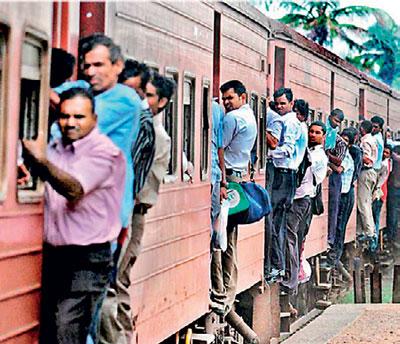04 Oct 2021 - {{hitsCtrl.values.hits}}
Sri Lanka’s official unemployment rate fell to 5.1 percent in the second quarter ended in June 2021 from 5.7 percent three months ago, but the underlying conditions aren’t too well as the labour force participation rate fell below 50 percent to 49.8 percent sparking concerns about possible shrinking of the workforce.
 According to the latest headline employment data released by the Central Bank, courtesy of the Department of Census and Statistics, although the unemployment rate may have come down during the virus stricken quarter between April and June, which is somewhat surprising as it defied the economic conditions prevailed at the time, overall numbers spell some daunting issues facing the country’s labour market as reflected by the numbers actually participated in the economy.
According to the latest headline employment data released by the Central Bank, courtesy of the Department of Census and Statistics, although the unemployment rate may have come down during the virus stricken quarter between April and June, which is somewhat surprising as it defied the economic conditions prevailed at the time, overall numbers spell some daunting issues facing the country’s labour market as reflected by the numbers actually participated in the economy.
The labour force participation rate measures both the employed and unemployed population who are looking for jobs, as a share of the total working age population. The working age population is those at 15 and above.
The decline in this ratio to 49.8 percent by June 2021 from 50.9 percent in March 2021 could present two possibilities—either the increase in the working age population or the shrinking of the labour force, which is defined as the economically active population of a country.
While it is yet to be established, shrinking of the labour force could very much be the possibility for the lower number in the 2Q, possibly reflecting the perverse effects of the pandemic on the labour
market dynamics.
For instance, a monthly survey conducted by the Central Bank through August this year showed continuously high retirements and voluntary resignations which outstripped the new recruitments, a classic case of shrinking workforce during the pandemic.
Besides the two identified reasons, many companies in industries severely affected by the pandemic induced-economic restrictions practiced layoffs and furloughs continued for months. In some cases in the hospitality industry, such practices even dated back to more than a year and the conditions weren’t too different in the entertainment and event industry whose activities were beset by the pandemic.
Out of these, some may have left the country seeking overseas employment after waiting for months for their employers to call them back, further narrowing the labour force. And some of them may have completely given up hope on locating a job anytime soon until the economy re-opens and recovers from the current depths, so this category doesn’t form a part of the unemployed.
Under these conditions, even the reported unemployment rate could also masks the true unemployment in the country as it takes into account those who were looking for a job but didn’t find one in the four weeks before the survey.
In many in service industries such as tourism, entertainment, restaurants, retail not captured under essential services, salons & beauty parlours and event management, people had no other recourse until they are recalled by their employers or until they are allowed to resume their operations if they are the owners of the businesses.
While the reported unemployment rate, which masks the true picture, the lower labour force participation rate paints a gloomy picture of the current labour market in Sri Lanka and it requires urgent action by the policy makers.
However, the gradual re-opening of the economy could take much of the sting out from the pressures building in the labour market which could well spill over into social unrest and widespread discontent created by the loss of jobs unless economic opportunities are generated.
17 Nov 2024 8 hours ago
17 Nov 2024 9 hours ago
17 Nov 2024 17 Nov 2024
17 Nov 2024 17 Nov 2024
17 Nov 2024 17 Nov 2024